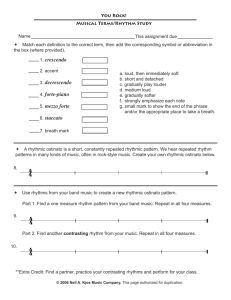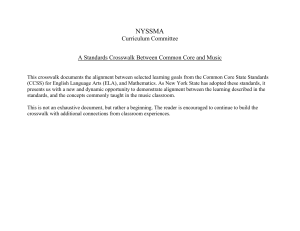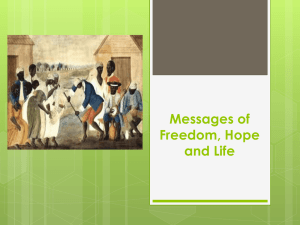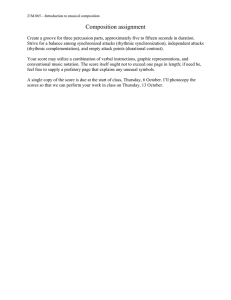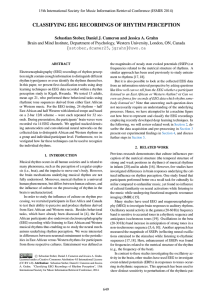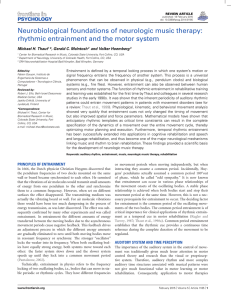We got the beat August 8, 2006 By Heather Wax
advertisement
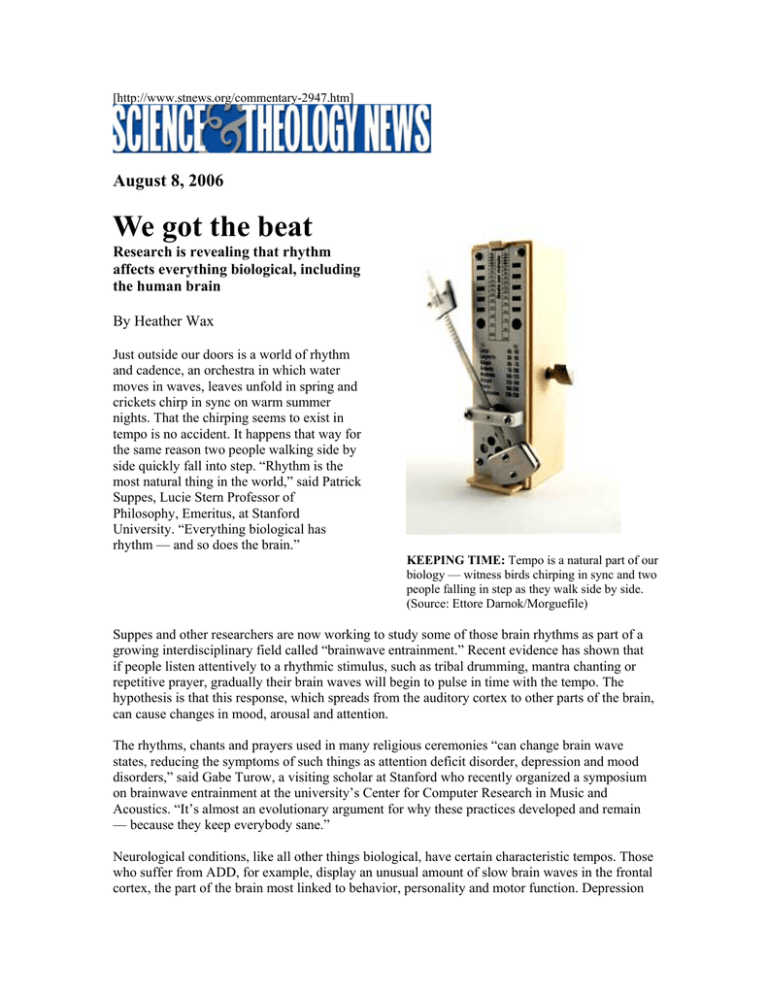
[http://www.stnews.org/commentary-2947.htm] August 8, 2006 We got the beat Research is revealing that rhythm affects everything biological, including the human brain By Heather Wax Just outside our doors is a world of rhythm and cadence, an orchestra in which water moves in waves, leaves unfold in spring and crickets chirp in sync on warm summer nights. That the chirping seems to exist in tempo is no accident. It happens that way for the same reason two people walking side by side quickly fall into step. “Rhythm is the most natural thing in the world,” said Patrick Suppes, Lucie Stern Professor of Philosophy, Emeritus, at Stanford University. “Everything biological has rhythm — and so does the brain.” KEEPING TIME: Tempo is a natural part of our biology — witness birds chirping in sync and two people falling in step as they walk side by side. (Source: Ettore Darnok/Morguefile) Suppes and other researchers are now working to study some of those brain rhythms as part of a growing interdisciplinary field called “brainwave entrainment.” Recent evidence has shown that if people listen attentively to a rhythmic stimulus, such as tribal drumming, mantra chanting or repetitive prayer, gradually their brain waves will begin to pulse in time with the tempo. The hypothesis is that this response, which spreads from the auditory cortex to other parts of the brain, can cause changes in mood, arousal and attention. The rhythms, chants and prayers used in many religious ceremonies “can change brain wave states, reducing the symptoms of such things as attention deficit disorder, depression and mood disorders,” said Gabe Turow, a visiting scholar at Stanford who recently organized a symposium on brainwave entrainment at the university’s Center for Computer Research in Music and Acoustics. “It’s almost an evolutionary argument for why these practices developed and remain — because they keep everybody sane.” Neurological conditions, like all other things biological, have certain characteristic tempos. Those who suffer from ADD, for example, display an unusual amount of slow brain waves in the frontal cortex, the part of the brain most linked to behavior, personality and motor function. Depression and anxiety have their own brain wave signatures — patterns and frequencies that researchers can discover using electroencephalographs, or EEGs, which measure electrical impulses. By slowing down or speeding up brain wave activity, scientists such as Harold Russell, a clinical psychologist and adjunct research professor in the department of gerontology and health promotion at the University of Texas Medical Branch at Galveston, believe they can systematically alter these mental states and improve brain functioning. In one experiment, Russell altered the brain rhythms of elementary and middle school boys with ADD by having them wear special eyeglasses and headphones that administered rhythmic light and sound stimulation. After only two months of 20-minute treatment sessions five days a week, the children demonstrated a significant and lasting ability for greater concentration — in much the same way they might have had they been taking medications such as Ritalin or Adderall. They also performed better on IQ tests and showed a reduction in behavioral problems when compared with a control group. In another experiment, Thomas Budzynski, an affiliate professor of psychology at the University of Washington, found that rhythmic light and sound stimulation increased blood flow throughout the brains of elderly subjects, improving their cognitive functioning. While such studies show that a combination of visual and auditory stimulation produces the greatest effect on brain activity, sound alone can do the trick. “The fact that we can do this using music is an interesting prospect,” said Turow. “If things are happening the way we think they are on a mechanistic level, based on what we know from lab research and ethnographic observations of religious practices, it gives us more reasons to become interested in things like [rhythmic] prayer — even if it’s not for spiritual reasons, even if you don’t feel you’re connecting with God — because there are some really good side effects on mental health, on maintaining mental stability.” In much the same way that fast beats appear to encourage more alert and focused thinking, slower beats, such as those found in many prayers and mantras, seem to encourage the slow brain waves that are associated with meditation, relaxation and strong emotional responses. For Suppes, who studies brain waves and language cognition, “the research thus far is lacking definitive proof of how the brain represents music. But we know it’s behaviorally successful, and I’m optimistic there’ll be much more progress.” Heather Wax is features editor at Science & Spirit magazine in Quincy, Mass.
